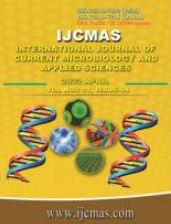


 National Academy of Agricultural Sciences (NAAS)
National Academy of Agricultural Sciences (NAAS)

|
PRINT ISSN : 2319-7692
Online ISSN : 2319-7706 Issues : 12 per year Publisher : Excellent Publishers Email : editorijcmas@gmail.com / submit@ijcmas.com Editor-in-chief: Dr.M.Prakash Index Copernicus ICV 2018: 95.39 NAAS RATING 2020: 5.38 |
Ultraviolet (UV) radiation falls between visible light and X-rays (100–400 nm) in the electromagnetic spectrum. UVA, UVB, and UVC are the three sub-regions of the ultraviolet spectrum., with UVC reported most effective against microorganisms. Depending on the microorganism's form, UV has a different effect on microbes, having a greater effect on vegetative cells possessing short contact time, while spore-forming organisms are more resistant to UV. Yeast has also been reported to survive UV radiation better than other organisms. UV light makes microorganisms dormant by forming pyrimidine dimers in RNA and DNA, which prevent replication and transcription. Impact of UV light on microorganisms is dependent on microbial exposure and the environment the organisms exist in. Evaluating the impacts of ultraviolet radiation on different species of microbes can help in the prevention of contamination and spread of infectious organisms. There are limited reviews on the effects of ultraviolet radiation on microbes. This review will therefore analyse the effects of UV on viruses, bacteria and fungi which are the most common types of microbes.
 |
 |
 |
 |
 |